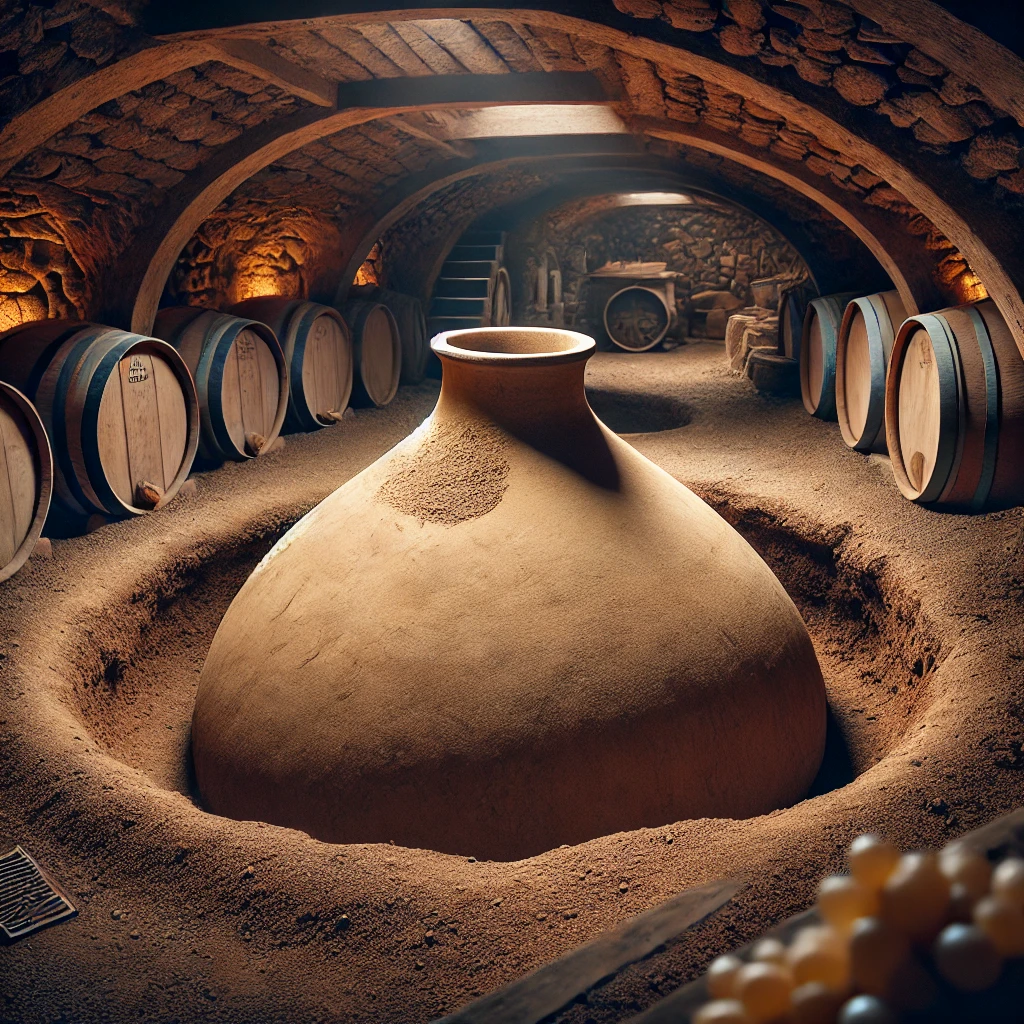
The discovery sent shockwaves through the archaeological community: residue analysis from pottery shards found in Georgia revealed evidence of wine production dating back 8,000 years. These ancient vessels weren't just containers; they were sophisticated tools that shaped the character of humanity's earliest wines. Today, as winemaking technology reaches unprecedented sophistication, we're witnessing a remarkable phenomenon - the resurgence of ancient vessel techniques, now informed by modern science and engineering. This convergence of past and present is reshaping how we think about wine aging and fermentation.
The Archaeological Record The story of wine vessels is fundamentally the story of human technological advancement. Archaeological excavations across the ancient world have revealed a sophisticated progression of vessel development. The earliest evidence comes from the South Caucasus, where Neolithic populations first began making pottery specifically designed for wine fermentation and storage. These vessels weren't crude containers, but carefully engineered tools with specific shapes and materials chosen to maintain wine quality.
Chemical analysis of residues found in ancient vessels has revealed fascinating details about early winemaking practices. Mass spectrometry of pottery fragments has identified tartaric acid - a key molecular fingerprint of grape wine - along with other compounds indicating sophisticated understanding of fermentation processes. The evolution of vessel shapes throughout antiquity wasn't random; it reflected an increasing understanding of how geometry affects fermentation and storage.
The Science of Vessel Interaction Modern analysis has revealed the complex interplay between wine and its container. Porosity, perhaps the most crucial characteristic, varies dramatically between materials. This microscopic property controls oxygen exposure - a fundamental factor in wine development. Clay vessels, for instance, allow minute amounts of oxygen to permeate, creating an environment that promotes gentle oxidation and complex flavor development.
Temperature stability, another critical factor, varies significantly between materials. Traditional materials like clay and concrete have high thermal mass, maintaining stable temperatures naturally. This property was crucial in ancient times and remains relevant today, particularly as climate change poses new challenges to wine stability.
The chemistry of surface interactions between wine and vessel is remarkably complex. Clay vessels can release trace minerals into wine, potentially affecting both flavor and texture. Concrete vessels, particularly modern formulations, can influence pH levels and mineral content. These interactions, once viewed as flaws, are now understood as potential tools for wine development.
Bacterial and microbial considerations add another layer of complexity. Different vessel materials create distinct microenvironments that can either promote or inhibit various microbial populations. This understanding has led to innovations in vessel surface treatment and cleaning protocols.
Traditional Vessel Types Clay vessels, particularly amphorae and qvevri, represent humanity's earliest purpose-built wine containers. Their design evolved through centuries of refinement, incorporating features that modern science has validated as beneficial for wine development. The slight porosity of clay, combined with its temperature stability, creates ideal conditions for gradual wine evolution.
Wooden barrels, though developed later, revolutionized wine aging. The interaction between wine and wood introduces complex compounds that contribute to flavor and texture. Different wood species and toast levels provide winemakers with a sophisticated palette of aging options.
Concrete tanks, introduced in the early 20th century, combine some characteristics of clay with modern durability. Their micro-oxygenation properties and temperature stability have made them increasingly popular in contemporary winemaking.
Modern Material Science Revolution The introduction of stainless steel in the mid-20th century marked a pivotal moment in winemaking. These vessels offered unprecedented control over fermentation conditions, with perfect hygiene and temperature regulation. Advanced temperature control systems, coupled with inert materials, allowed winemakers to precisely manage fermentation kinetics.
Modern concrete formulations have evolved significantly from their early predecessors. New mixing techniques and additives have created materials with precisely controlled porosity and mineral content. Some manufacturers now incorporate temperature control systems within concrete walls, combining traditional benefits with modern precision.
The Return to Clay The contemporary revival of clay vessels represents more than nostalgia. Modern manufacturing techniques have addressed historical challenges of consistency and durability. Computer-aided design has optimized vessel shapes for specific winemaking goals, while improved firing techniques create more reliable porosity profiles.
Quality control advances have made clay vessel production more consistent and predictable. Modern testing methods ensure uniform porosity and structural integrity, addressing historical concerns about vessel variability. Temperature control systems have been adapted for clay vessels, allowing winemakers to combine traditional materials with precise temperature management.
Comparative Analysis of Vessel Effects Scientific studies have documented distinct patterns of flavor development in different vessels. Wines aged in clay typically show gradual oxidative development with preserved fruit characteristics. Concrete vessels tend to promote mineral expression while maintaining freshness. These patterns provide winemakers with tools to achieve specific stylistic goals.
The economic considerations of vessel choice extend beyond initial purchase price. Durability, maintenance requirements, and space efficiency all factor into long-term cost analysis. Environmental impact has become increasingly important, with traditional materials often showing advantages in lifecycle assessment.
Future Innovations Current research in materials science suggests exciting possibilities for future vessel development. Advanced ceramics with precisely engineered porosity are under development. Artificial intelligence is being employed to optimize vessel shapes for specific wine styles and fermentation conditions. These innovations promise even greater precision in managing wine development.
The synthesis of ancient wisdom with modern science has created unprecedented opportunities in winemaking. As our understanding of vessel-wine interaction grows more sophisticated, we're likely to see continued innovation in materials and designs. Yet the enduring relevance of ancient vessel types reminds us that some solutions, discovered millennia ago, remain fundamentally sound.
This convergence of tradition and innovation exemplifies the dynamic nature of winemaking technology. As we face new challenges in climate change and sustainability, the lessons learned from studying ancient vessels may prove increasingly valuable. The future of wine vessels lies not in choosing between tradition and innovation, but in their thoughtful integration.
